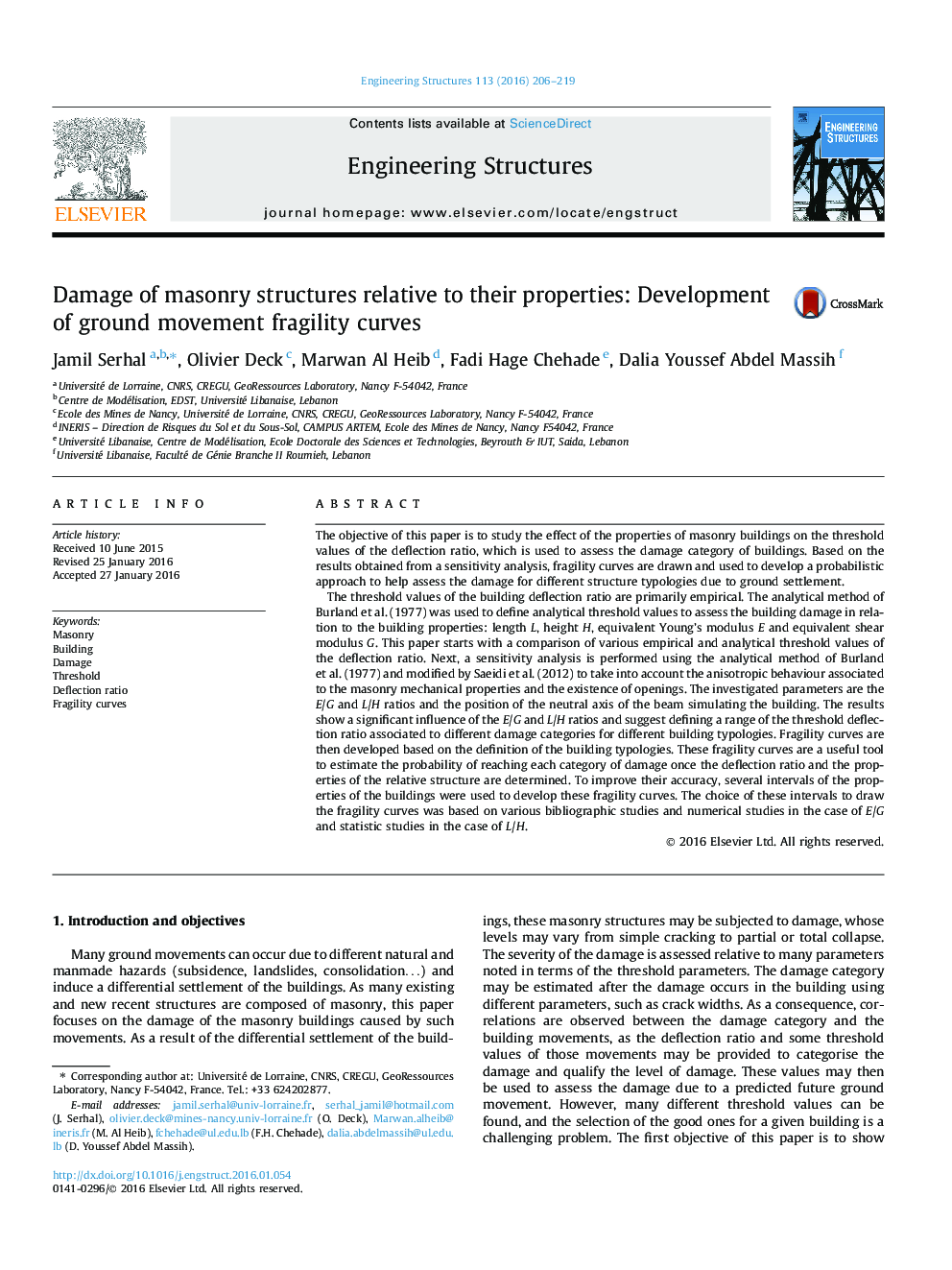| Article ID | Journal | Published Year | Pages | File Type |
|---|---|---|---|---|
| 6740131 | Engineering Structures | 2016 | 14 Pages |
Abstract
The threshold values of the building deflection ratio are primarily empirical. The analytical method of Burland et al. (1977) was used to define analytical threshold values to assess the building damage in relation to the building properties: length L, height H, equivalent Young's modulus E and equivalent shear modulus G. This paper starts with a comparison of various empirical and analytical threshold values of the deflection ratio. Next, a sensitivity analysis is performed using the analytical method of Burland et al. (1977) and modified by Saeidi et al. (2012) to take into account the anisotropic behaviour associated to the masonry mechanical properties and the existence of openings. The investigated parameters are the E/G and L/H ratios and the position of the neutral axis of the beam simulating the building. The results show a significant influence of the E/G and L/H ratios and suggest defining a range of the threshold deflection ratio associated to different damage categories for different building typologies. Fragility curves are then developed based on the definition of the building typologies. These fragility curves are a useful tool to estimate the probability of reaching each category of damage once the deflection ratio and the properties of the relative structure are determined. To improve their accuracy, several intervals of the properties of the buildings were used to develop these fragility curves. The choice of these intervals to draw the fragility curves was based on various bibliographic studies and numerical studies in the case of E/G and statistic studies in the case of L/H.
Related Topics
Physical Sciences and Engineering
Earth and Planetary Sciences
Geotechnical Engineering and Engineering Geology
Authors
Jamil Serhal, Olivier Deck, Marwan Al Heib, Fadi Hage Chehade, Dalia Youssef Abdel Massih,
